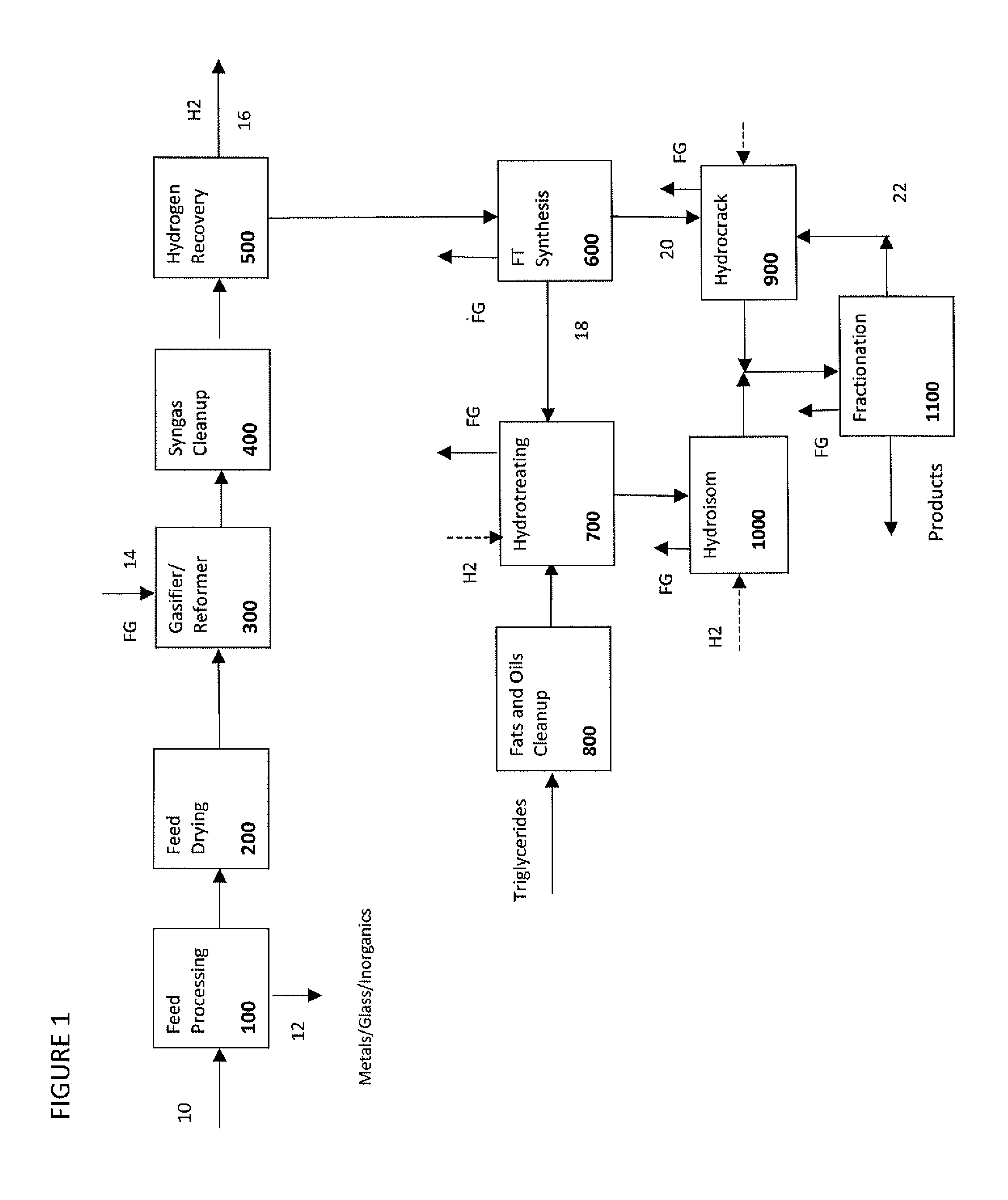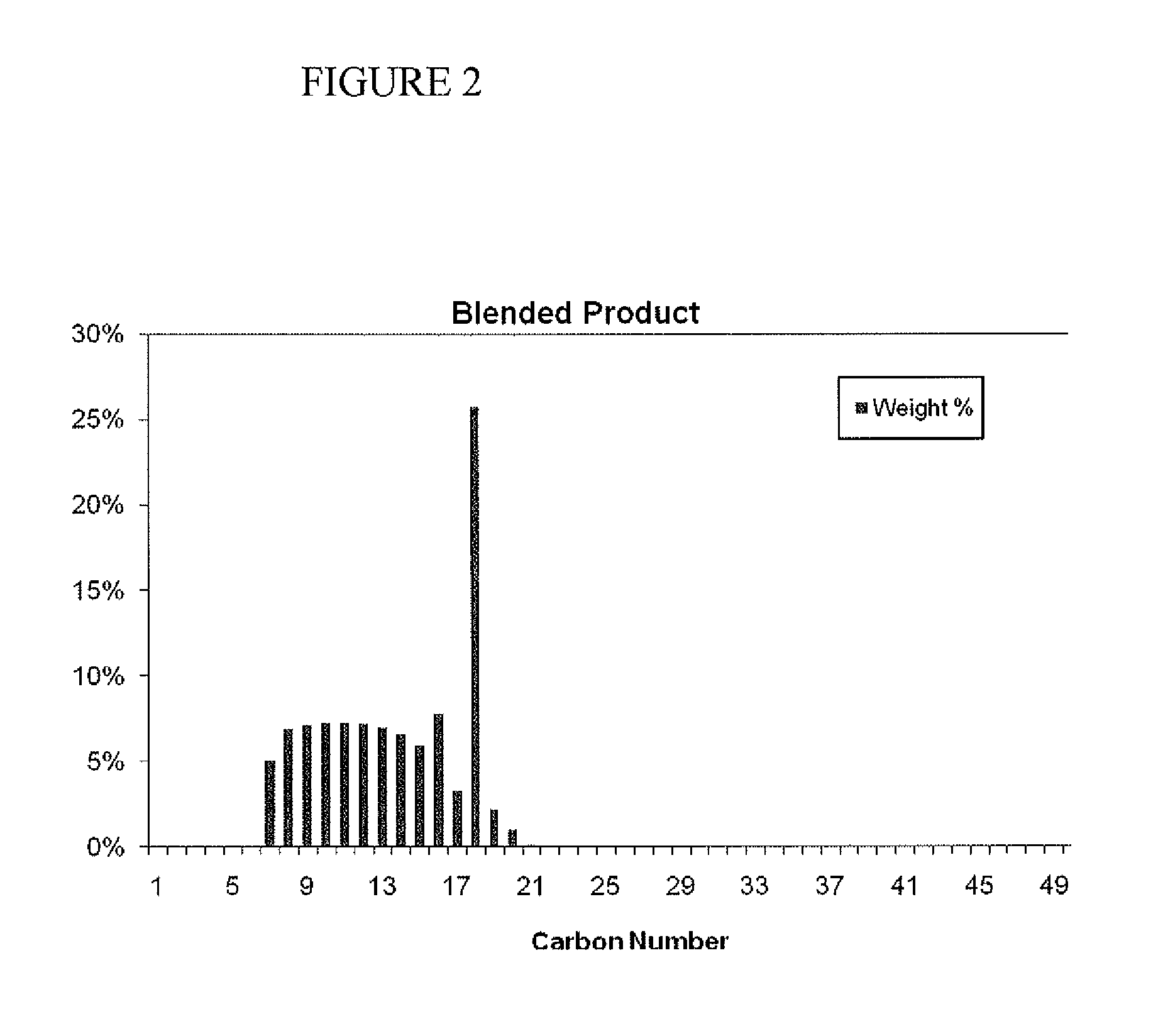Production of distillate fuels from an integrated municipal solid waste/triglyceride conversion process
a technology of distillate fuel and solid waste, which is applied in the direction of combustible gas production, combustible gas purification/modification, hydrocarbon oil treatment products, etc., can solve the problems of reducing the efficiency of small plants (2000 tons per day), affecting the production of commodity chemicals or transportation fuels, and reducing the efficiency of municipal solid waste transportation
- Summary
- Abstract
- Description
- Claims
- Application Information
AI Technical Summary
Problems solved by technology
Method used
Image
Examples
Embodiment Construction
[0023]The present invention relates to a novel integration that allows a gasifer to operate at conditions that enhance operability with respect to handling a variety of biomass materials while improving the efficiency of the process. The present invention also relates to a novel method for unexpectedly increasing the overall yield of the conversion of triglycerides to transportation fuel through the combined processing of Fischer-Tropsch liquids and triglycerides within the same process. The combined feed can be converted into several product streams. One product stream is comprised of hydrocarbons having a carbon numbers range of about C5 to C20. Another product stream is comprised of hydrocarbons in the C8 to C20+ range, with the majority being in the C20+ range. The C5 to C20 hydrocarbon stream is hydrotreated to remove oxygenates and to saturate at least a portion of the unsaturated bonds of olefinic components of the stream. The stream is then hydroisomerized to a desired level...
PUM
| Property | Measurement | Unit |
|---|---|---|
| total pressures | aaaaa | aaaaa |
| temperatures | aaaaa | aaaaa |
| pressures | aaaaa | aaaaa |
Abstract
Description
Claims
Application Information
 Login to View More
Login to View More - R&D
- Intellectual Property
- Life Sciences
- Materials
- Tech Scout
- Unparalleled Data Quality
- Higher Quality Content
- 60% Fewer Hallucinations
Browse by: Latest US Patents, China's latest patents, Technical Efficacy Thesaurus, Application Domain, Technology Topic, Popular Technical Reports.
© 2025 PatSnap. All rights reserved.Legal|Privacy policy|Modern Slavery Act Transparency Statement|Sitemap|About US| Contact US: help@patsnap.com


